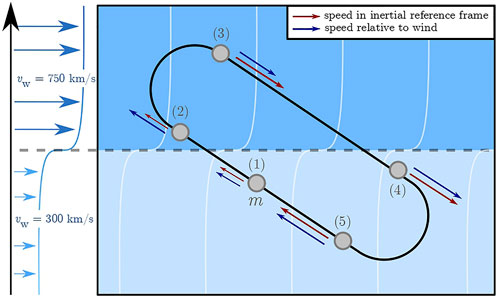
Scientists Devise Faster Method of Interstellar Space Travel Based on Seabird Gliding
(Credit: Ivo Andričić/pixabay)
After decades of space exploration, humanity’s reach has still only barely extended beyond the bounds of the solar system. With current technology, it would take thousands of years just to reach the nearest star. A recent study proposes a new method of interstellar travel based on the way seabirds pick up speed as they glide between air currents. The team claims this approach to surfing the solar wind could accelerate a spacecraft to high speeds in a short time while using almost no fuel.
(Credit: JJ Harrison/Wikimedia Commons)
The concept is, on its face, similar to a traditional solar sail.
Both seabirds and unpowered gliders can take advantage of dynamic soaring to gain speed. The trick is to repeatedly cross the boundary between air masses of different velocities. The study envisions something more advanced than the physical sails being tested currently, a “magnetohydrodynamic wing” generated by a pair of plasma magnets. The team describes this as a lift-generating wing without the physical structure. The vessel would use this system to glide back and forth between areas of faster and slower particle flow, for example, the heliopause at the boundary of the solar system.

The trajectory of a vehicle performing dynamic soaring in wind shear on the slow and fast solar wind. Credit: Frontiers in Space Technologies
, published in Frontiers in Space Technologies, claims that “space soaring” could push a spacecraft to 0.5 percent the speed of light in about a month. or two percent given a year and a half. At that speed, the journey to the nearest stars would take just a century or two. Yes, that’s still a long time, but it’s better than tens of thousands of years, which is how long it will take the Voyager probes to reach nearby stars.
This analysis is limited to the physics involved — the team didn’t build any new propulsion hardware to test the theory. However, the numbers work based on what we know of the solar wind and interstellar medium. The team suggests this could be the first leg of a multistage interstellar mission. Although, even if such a mission were launched in our lifetimes, our grandchildren would be lucky to see it succeed.
Now read: